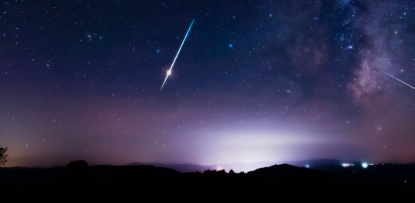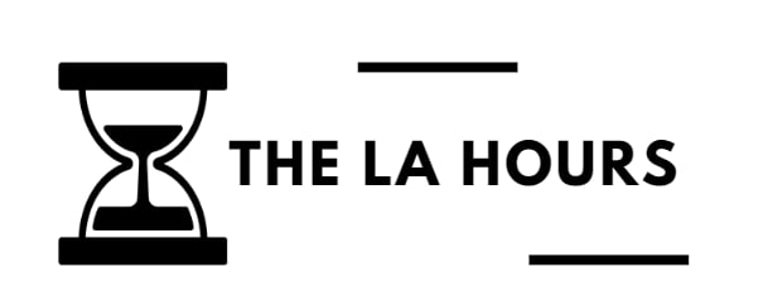Out of the Box: Meteor Shower vs. TikTok Trends
When the sky puts on a billion-year-old performance and no one looks up because the algorithm didn’t remind them to.
FEATUREDSCIENCE


It was supposed to be a cosmic event — the kind of celestial spectacle that makes humans remember their tininess in the best possible way.
The annual Draconid meteor shower was forecast to peak at 9:43 PM. Astronomers predicted bursts of fiery trails cutting across the October sky, each one a glowing fragment of comet dust burning in the atmosphere — a cosmic fireworks show that predates every human civilization.
Meanwhile, on TikTok, the top trending sound was a sped-up remix of “Barbie Girl,” and the trending challenge was called the “Sleepy Eyebrow Glow-Up.”
You can probably guess which one got more views.
The View from Down Here
Somewhere in Arizona, a man named Caleb set up his DSLR camera to photograph the meteors. He’d been planning it for weeks — tracking moonlight interference, checking humidity, charging his external battery.
At the same time, his teenage niece Layla was in the living room trying to film a video where she perfectly syncs a lip-bite to the drop of a Doja Cat remix.
Caleb stepped outside. Layla stayed in.
That’s 21st-century astronomy in a nutshell.
When we finally looked up from our screens, we found out the stars were still there — but they’d been unfollowed.
The Algorithmic Eclipse
Every generation has its distractions.
The Victorians had opium and séances. The 1990s had AOL chatrooms and Beanie Babies. We have algorithms — invisible curators deciding whether you’ll see a meteor shower or a makeup tutorial.
And the algorithm, as it turns out, doesn’t care about space dust.
The night of the shower, NASA’s live feed on YouTube peaked at about 80,000 viewers. TikTok’s top live stream — someone pretending to be a Minecraft villager while eating spicy noodles — had 2.3 million.
The cosmos, it seems, is not optimized for engagement.
When Awe Became Optional
It wasn’t always this way. A few decades ago, cosmic events were the trend. When Halley’s Comet appeared in 1986, schools held “Comet Days.” When the 2017 solar eclipse hit, half of America risked retinal damage for the perfect photo.
But something changed.
We started treating awe like a subscription service. We only experience wonder when the algorithm serves it up — conveniently packaged, digestible, branded.
The Draconid meteors didn’t get that memo. They appeared unscheduled, unfiltered, inconveniently real. Which made them, paradoxically, invisible.
The Night the Sky Lost the Feed
In Los Angeles, a group of astronomy students from UCLA gathered at Griffith Park, telescopes pointed up. They invited passersby to take a look.
Most did not. One couple stopped briefly, asked if the telescopes could “zoom in on the moon,” then wandered off. A woman livestreamed her brief glance at the stars with the caption, “#AstrologyVibes.”
Meanwhile, one meteor streaked by — quick, brilliant, gone. The crowd gasped. The woman missed it. Her Wi-Fi glitched.
It’s a small, perfect metaphor for the species: missing eternity because the connection dropped.
Cosmic Context Collapse
There’s a phrase sociologists use for what’s happening online: context collapse — the flattening of all experiences into the same undifferentiated scroll.
Your aunt’s cat video, a climate disaster, an ad for dental aligners, and an actual meteor burning through the sky all occupy the same 6-inch screen space.
That’s the tragedy of the digital sublime — the infinite squeezed into the trivial.
When everything competes for your attention, nothing wins. Not even the cosmos.
The Meteor That Went Viral Anyway
Of course, one meteor did go viral — briefly.
Around 10:17 PM, a man in Utah captured a bright fireball streaking across the horizon and posted it with the caption: “Alien Uber?” The clip got 4.8 million views.
Within hours, it had been stitched into parodies, edited with sound effects, and repurposed into memes about Elon Musk’s next rocket.
For a day, the meteor shower was trending — not as an astronomical event, but as content. The heavens had been monetized, again.
Even stardust has to hustle now.
When Science Sounds Like a Soft Launch
NASA tried to fight back. They posted educational threads explaining how the meteors originated from the comet 21P/Giacobini-Zinner. They included diagrams, history, and tips for viewing.
The replies?
“Ok but is it dangerous?”
“Looks fake tbh.”
“Would this be a good background for a thirst trap?”
This is what it’s like to communicate science in 2025: the tone of the cosmos, filtered through the syntax of influencer culture. Every attempt at wonder must now sound like a soft launch for a skincare brand.
“Introducing: The Universe™. Infinite. Vast. Clinically tested for existential dread.”
The Stars Don’t Need Us (But We Need Them)
Here’s the uncomfortable truth: the sky doesn’t care if we’re watching. The meteors burned just fine without our likes.
But we, as it turns out, do need the sky.
Not for astrology, not for navigation, not even for science. For humility.
There’s a kind of psychic nutrition in looking up — a recalibration of perspective that no app can replicate. When you stare at a meteor streaking across space, you’re seeing something that was once a piece of a comet, now turning into light for the briefest moment. It’s a performance older than language, and it never once asked for engagement metrics.
Influencer in the Sky
Still, maybe the problem isn’t attention, but translation.
If the universe wants relevance, maybe it needs a rebrand. Not The Draconid Meteor Shower, but #SpaceConfetti2025. Not “debris from a comet,” but “celestial throwback from 40,000 years ago.”
Imagine NASA hiring a social media manager named Skylar to write captions like:
“POV: You’re a piece of cosmic dust crashing into Earth’s vibe check at 80,000 mph 💫✨”
Would people watch then? Absolutely.
Would they learn? Possibly.
Would Socrates weep? Definitely.
But at least the stars would trend.
The Last Unfilmed Thing
In Montana, away from the glow of cities and screens, the meteor shower did what it always does. The sky opened. Fire fell. Silence followed.
A handful of campers lay on their backs, no phones, no hashtags, just the occasional “wow.”
They’ll forget most of it — the cold, the mosquitoes, the faint ache in their necks. But they’ll remember that single meteor that tore the night apart and vanished, leaving only a trail of light and the echo of a wish they didn’t say out loud.
No likes, no views, no reposts. Just a private miracle.
That’s what the universe still offers — if you can stop scrolling long enough to notice it.
The Algorithm vs. the Abyss
Maybe, in some darkly poetic way, the algorithm and the universe aren’t enemies at all. Both are vast, mysterious, and indifferent. Both are shaped by forces we can’t see. Both occasionally throw something beautiful our way, just to remind us they can.
The difference is that one is trying to keep you hooked, while the other is trying to remind you you’re free.
The meteors fall. The trends rise. And somewhere between them — between awe and irony, between the infinite and the ephemeral — we choose what kind of beings we’ll be.
Maybe next year, we’ll look up.
But then again, maybe we’ll just wait for the highlights to drop on TikTok.
